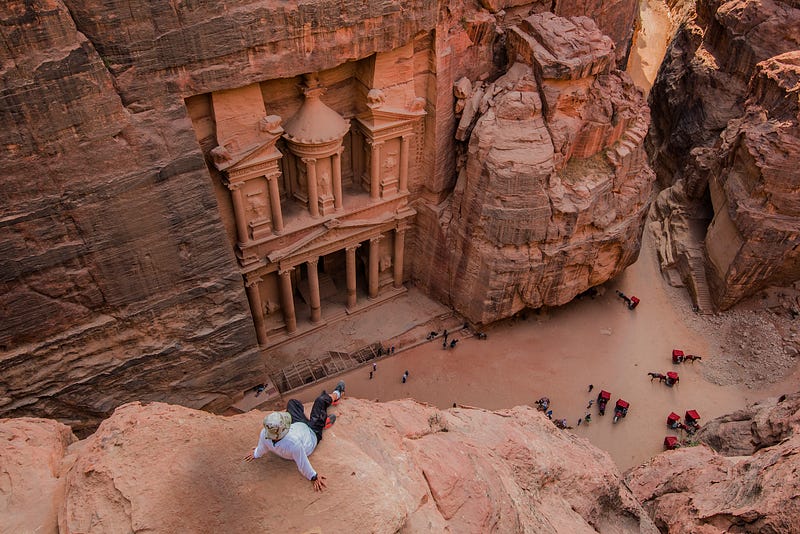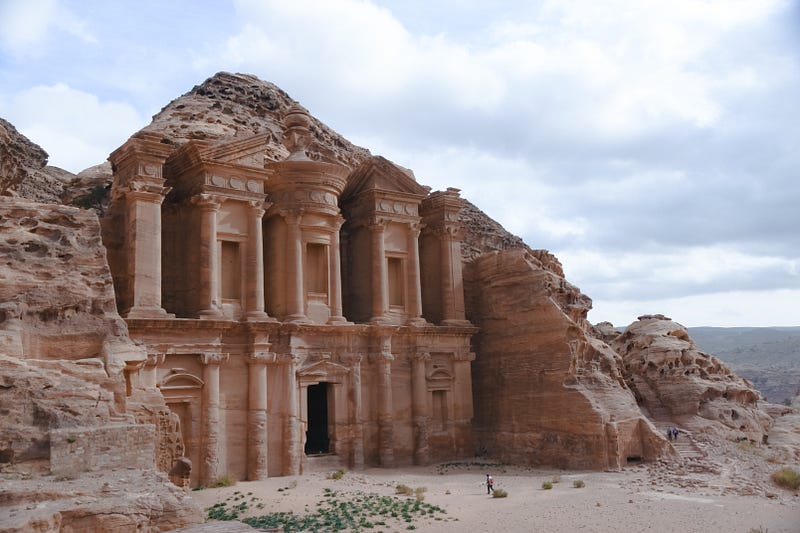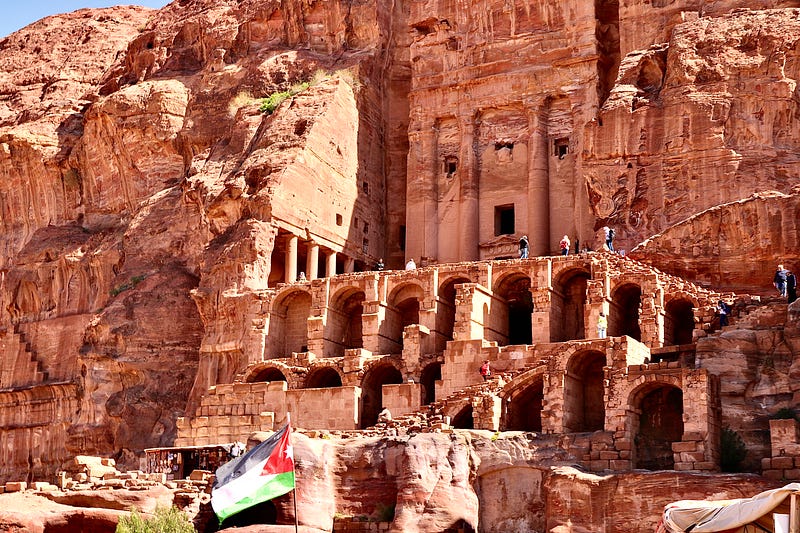Petra: A Timeless Marvel of Ancient Architecture
Written on
Chapter 1: The Enchantment of Petra
Petra, a remarkable historical and archaeological site nestled in southern Jordan, has mesmerized people for countless generations. Its distinctive rock-carved architecture and grand structures embedded in the cliffs symbolize the rich cultural and architectural legacy of ancient civilizations.
Originally, Petra served as the capital of the Nabataean Kingdom, an Arab tribe that governed the region from approximately the 6th century BCE until 106 CE. The Nabataeans were nomadic traders who amassed wealth through their control of vital trade routes, including the lucrative incense trade from southern Arabia to the Mediterranean. This affluence facilitated the development of intricate water systems and allowed them to sculpt awe-inspiring edifices into the rock faces, such as temples, tombs, and amphitheaters. Among these, the Treasury (Al-Khazneh) stands out as an iconic masterpiece of Nabataean design.

Photo by Ahmad Qaisieh on Unsplash
Despite their wealth, the Nabataeans remain shrouded in mystery, with scant documentation of their history and culture. The Nabataean language remains largely undeciphered, and there is limited insight into their beliefs and social structures. Nevertheless, their architectural achievements in Petra serve as a testament to their skill and creativity, providing glimpses into a rich cultural tapestry.
Numerous theories have been posited regarding the origins of the Nabataeans. Some scholars suggest they may have descended from the Edomites, a Biblical group, while others believe they were part of the ancient Arab kingdom of Ma’in. Speculations even connect them to the fabled city associated with King Solomon. However, the evidence supporting these theories is insufficient, necessitating further research to understand the roots of the Nabataean Kingdom.

Photo by Emile Guillemot on Unsplash
Dr. Susanne Bickel, a Semitic Philology professor at the University of Basel, has extensively studied Nabataean language and culture. In a discussion with National Geographic, she noted that the Nabataeans were influenced by a variety of cultures along their trade routes, leading to a unique synthesis in their style and language, evident in their architectural creations at Petra.
The connection between Petra and a vanished ancient civilization remains a compelling topic for historians and archaeologists. Ongoing excavations and research continue to illuminate the nuances of the Nabataean Kingdom's role in ancient history. A recent study published in the Journal of Archaeological Science utilized advanced techniques to examine Petra's water systems, revealing evidence of sophisticated engineering and planning—indicative of high technical expertise.

Photo by Alex Vasey on Unsplash
According to the Petra Development and Tourism Region Authority, Petra attracts approximately 1.5 million visitors annually and plays a crucial role in Jordan's economy, contributing about $30 million in revenue in 2020. One can only ponder how the Nabataeans would react to the throngs of tourists marveling at their former capital. “Isn’t it astonishing?” they might exclaim. “So many people coming to admire our creations. If only they recognized the effort it took to carve these structures!”
As the allure of Petra as a tourist destination grows, concerns regarding the impact of tourism have surfaced. Efforts are underway to strike a balance between preservation and development. The Petra National Trust is actively working to safeguard the site and its cultural heritage, implementing strategies to mitigate tourism's effects, such as visitor limits and promoting sustainable tourism practices.

Photo by Jorge Fernández Salas on Unsplash
With technological advancements, new methods are emerging to study and conserve Petra and similar ancient sites. Moving forward, we are likely to gain deeper insights into the Nabataean Kingdom and the enigmatic civilization that may have influenced it.
Despite the lingering mysteries surrounding Petra, it endures as a monument to the creativity and ingenuity of the ancient world. Its breathtaking architecture, monumental structures, and rich cultural history make it a must-visit destination for anyone passionate about history and archaeology. Whether you are a historian, an archaeologist, or simply a lover of antiquities, Petra is an experience not to be missed.

Photo by Jorge Fernández Salas on Unsplash
Petra stands as a true marvel of the ancient world, and its association with a lost civilization continues to spark curiosity. With ongoing research and preservation initiatives, the potential for future discoveries is boundless. Until then, we can appreciate the masterpieces crafted by the Nabataeans and draw inspiration from their remarkable creativity.